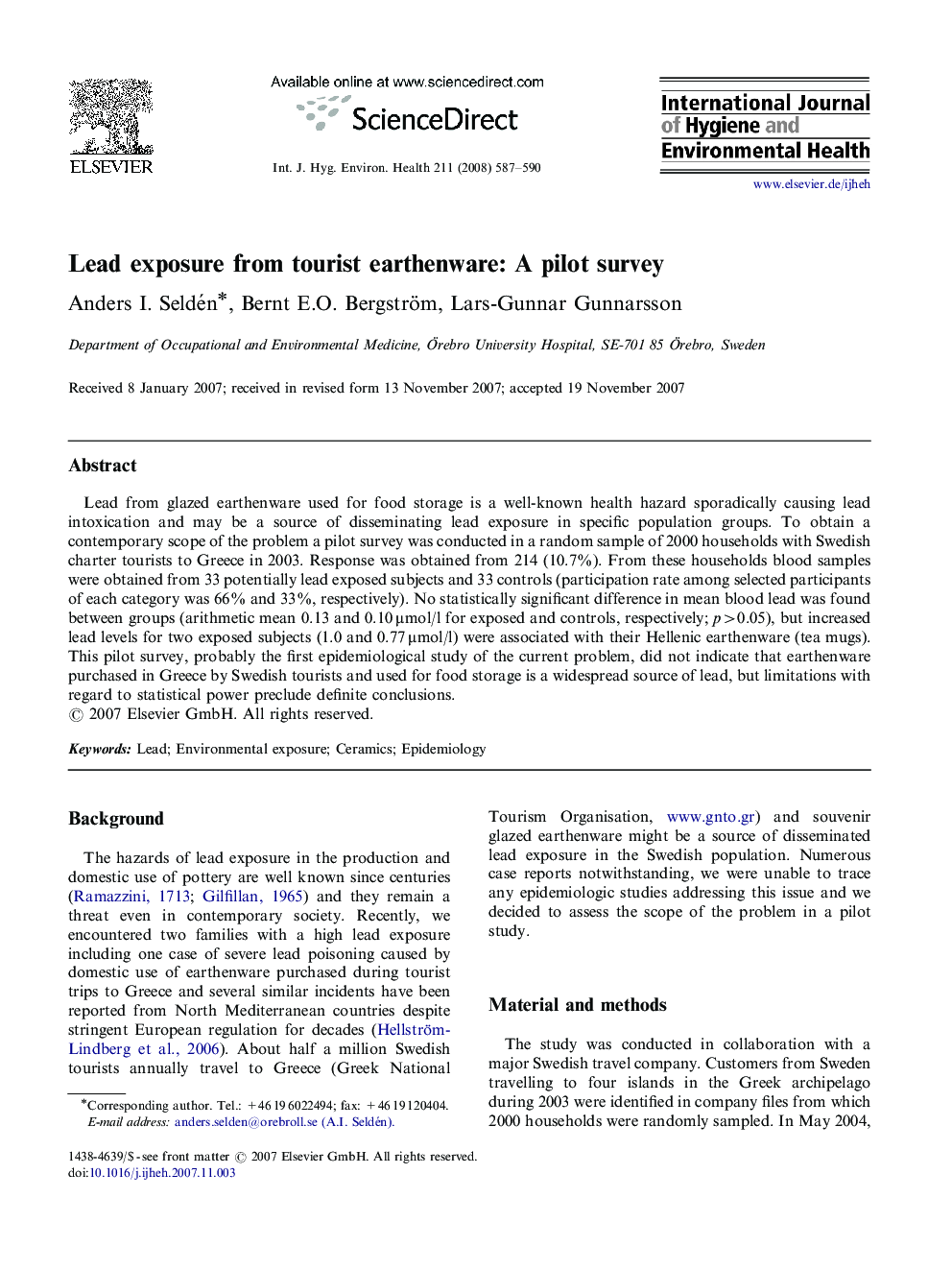| Article ID | Journal | Published Year | Pages | File Type |
|---|---|---|---|---|
| 2589186 | International Journal of Hygiene and Environmental Health | 2008 | 4 Pages |
Abstract
Lead from glazed earthenware used for food storage is a well-known health hazard sporadically causing lead intoxication and may be a source of disseminating lead exposure in specific population groups. To obtain a contemporary scope of the problem a pilot survey was conducted in a random sample of 2000 households with Swedish charter tourists to Greece in 2003. Response was obtained from 214 (10.7%). From these households blood samples were obtained from 33 potentially lead exposed subjects and 33 controls (participation rate among selected participants of each category was 66% and 33%, respectively). No statistically significant difference in mean blood lead was found between groups (arithmetic mean 0.13 and 0.10 μmol/l for exposed and controls, respectively; p>0.05), but increased lead levels for two exposed subjects (1.0 and 0.77 μmol/l) were associated with their Hellenic earthenware (tea mugs). This pilot survey, probably the first epidemiological study of the current problem, did not indicate that earthenware purchased in Greece by Swedish tourists and used for food storage is a widespread source of lead, but limitations with regard to statistical power preclude definite conclusions.
Related Topics
Life Sciences
Environmental Science
Health, Toxicology and Mutagenesis
Authors
Anders I. Seldén, Bernt E.O. Bergström, Lars-Gunnar Gunnarsson,
